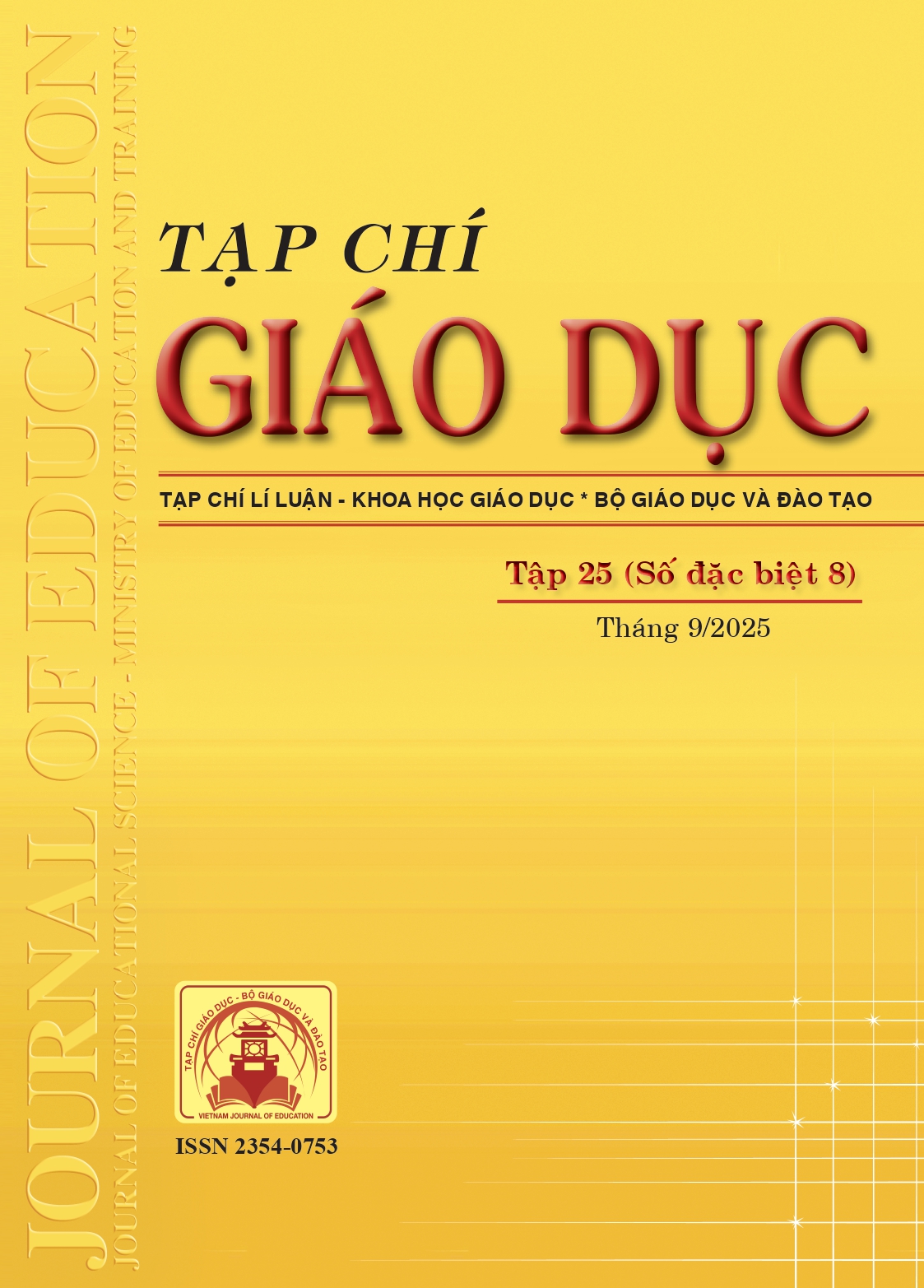Đối chiếu hiện tượng danh hóa động từ trong cấu trúc danh ngữ giữa tiếng Việt và tiếng Anh
Tóm tắt
Nominalization is a grammatical phenomenon commonly used in Vietnamese and English to increase the formality of the language. This article studies the phenomenon of nominalization of verbs in Vietnamese and English in the structure of noun phrases with the aim of finding similarities and differences between these two languages through analyzing noun phrases formed from verbs in Vietnamese and English in Vietnamese and English literary works of the modern and recent periods. After analyzing the collected samples, we found similarities and differences in the phenomenon of noun phrases formed from verbs between Vietnamese and English. The results show that, in both languages, noun phrases centered on nominalized verbs can be combined with pre- and post-auxiliary elements in a certain order, in which the pre-auxiliary element is used more commonly. However, Vietnamese tends to require the combination with the pre-auxiliary element, while English allows more flexible combinations between elements. Vietnamese usually combines nominalized verbs with elements closer to the center, while English prioritizes elements farther from the center. The study not only helps lecturers apply right teaching methods and design suitable exercises but also supports learners to recognize and use the structure of nominalized verbs in the process of second language acquisition correctly.
Tài liệu tham khảo
Crystal, D. (1987). The Cambridge Encyclopedia of Language. Cambridge University.
Đinh Văn Đức (2001). Ngữ pháp tiếng Việt (Từ loại). NXB Đại học Quốc gia Hà Nội.
Eastwood, J. (1994). Oxford guide to English Grammar. Oxford University Press.
Halliday, M. A. K. (1985). An Introduction to Functional Grammar. London: Edward Arnold.
Hoàng Phê (1998). Từ tiếng Việt. NXB Văn hóa Sài Gòn.
Hoàng Phê (2012). Từ điển Tiếng Việt. NXB Từ điển Bách khoa.
Janigova, S. (2008). Syntax of -ing form in legal English. Peter Lang AG.
Ke, P. (2019). Contrastive linguistics. Peking University Press.
Lê Huy Trường, Đặng Đình Thiện, Trần Huy Phương (2015). A Grammar of the English language (3rd ed.). Hanoi University.
Nguyễn Kim Thản (2008). Cơ sở ngữ pháp tiếng Việt. NXB Khoa học Xã hội.
Nguyễn Mạnh Hùng (2014). An Insight into English Lexicology. Vietnam National University Press.
Nguyễn Tài Cẩn (1998). Ngữ pháp tiếng Việt (Tiếng - Từ ghép - Đoản ngữ). NXB Đại học Quốc gia Hà Nội.
Nguyễn Thị Bích Ngoan (2013). So sánh đối chiếu hiện tượng danh hóa động từ trong tiếng Việt và tiếng Anh. Tạp chí Khoa học, Trường Đại học Sư phạm Thành phố Hồ Chí Minh, 46, 13-22.
Nguyễn Thiện Giáp (2008). Lược sử Việt ngữ học. NXB Giáo dục.
Nguyễn Thiện Giáp (2016). Từ điển khái niệm ngôn ngữ học. NXB Đại học Quốc gia Hà Nội.
Quirk, R., Greenbaum, S., Leech, G., & Svartvik, J. (1985). A Comprehensive Grammar of the English language. Longman.
Trương Thị Thuỷ (2022). Hiện tượng danh hóa trong ngôn ngữ văn bản hành chính (khảo sát qua văn bản hành chính cấp địa phương ở Quảng Nam, Đà Nẵng). Tạp chí Khoa học, Đại học Huế, 31(6B), 125-137.
Vũ Đức Nghiệu (chủ biên), Nguyễn Văn Hiệp (2010). Dẫn luận ngôn ngữ học. NXB Đại học Quốc gia Hà Nội.
Đã Xuất bản
Cách trích dẫn
Số
Chuyên mục
Giấy phép

Tác phẩm này được cấp phép theo Ghi nhận tác giả của Creative Commons Giấy phép quốc tế 4.0 .












